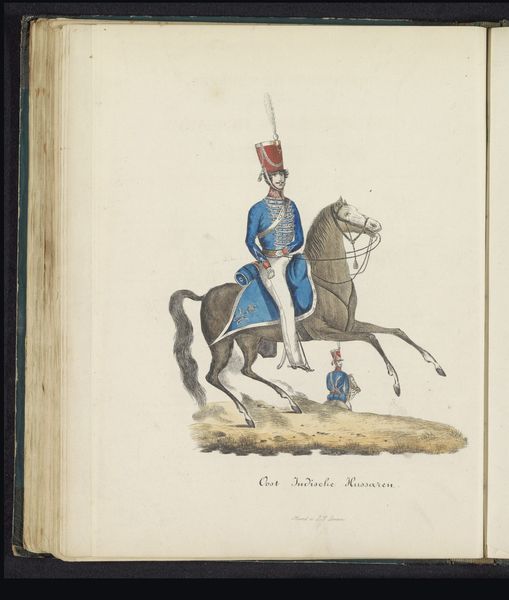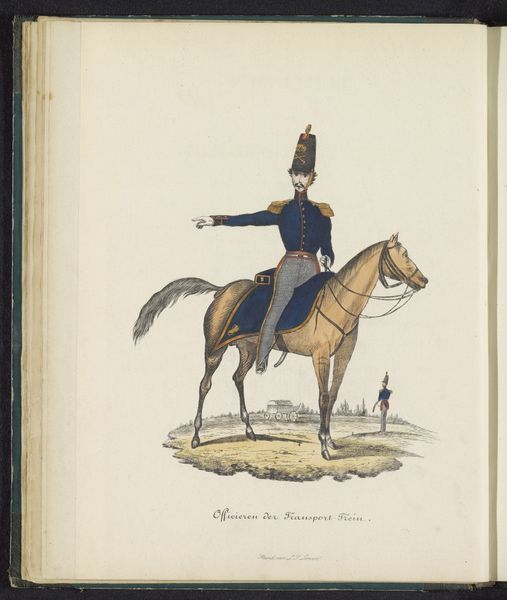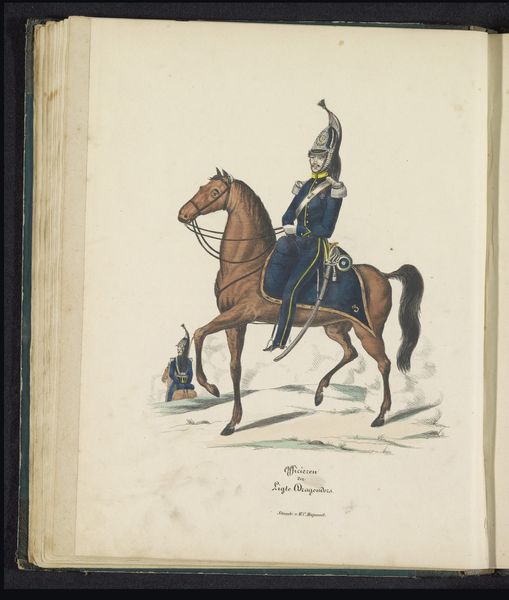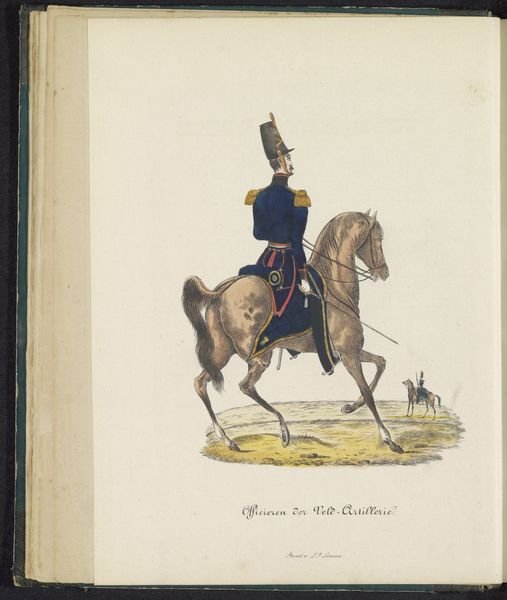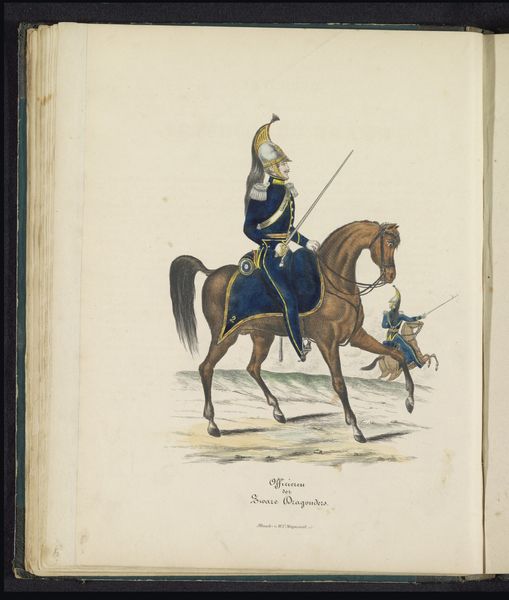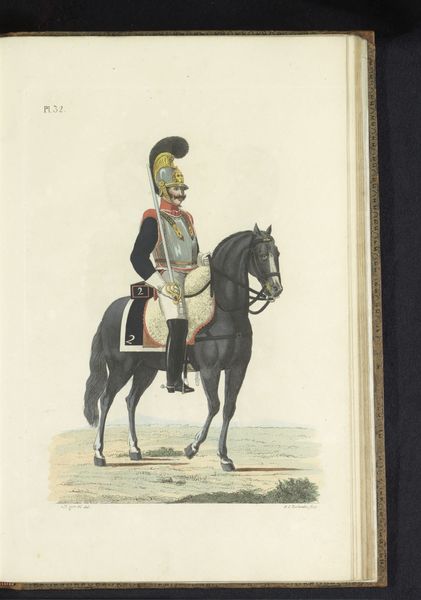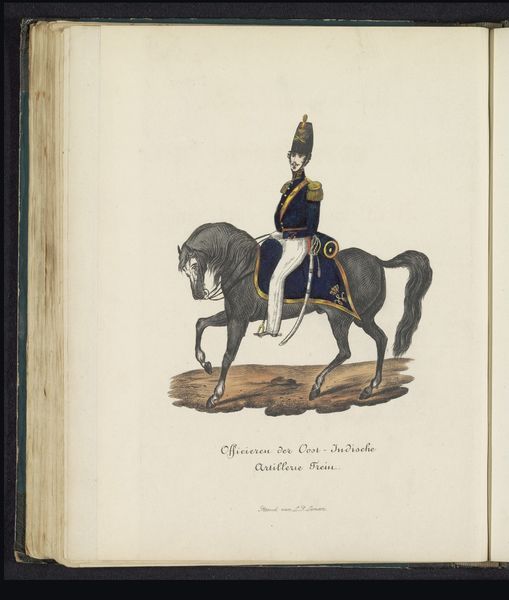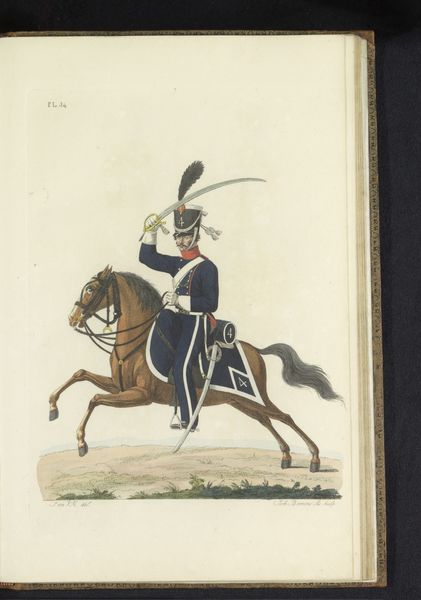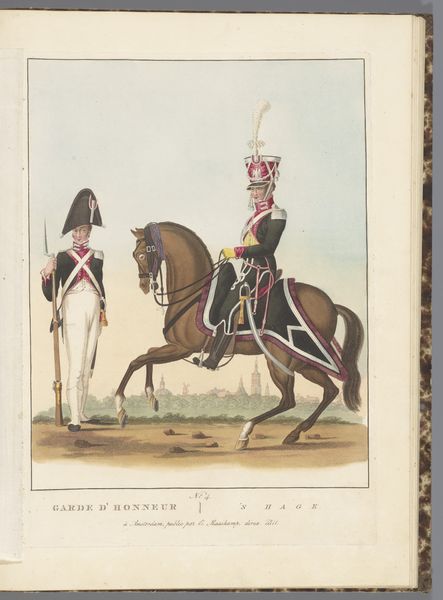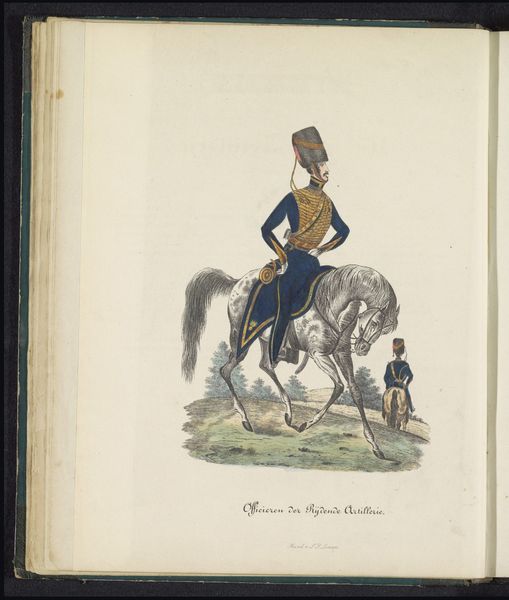
Uniform van de officieren van de jagers van het Limburgs Bondscontingent, 1845 1845
0:00
0:00
drawing, coloured-pencil
#
portrait
#
drawing
#
toned paper
#
coloured-pencil
#
coloured pencil
#
romanticism
#
watercolour illustration
#
genre-painting
#
history-painting
Dimensions: height 270 mm, width 200 mm
Copyright: Rijks Museum: Open Domain
Editor: This is a drawing titled "Uniform van de officieren van de jagers van het Limburgs Bondscontingent, 1845," created by Louis Salomon Leman using colored pencil and other media. I find the level of detail fascinating; how were such precise lines achieved with colored pencils back then? What’s your perspective on this piece? Curator: It's intriguing to consider the societal context of this image in relation to its production. Notice the precise rendering of the uniform, down to each button and braid. The materials and labor involved in creating such a detailed depiction, likely commissioned, speak to the social and economic status both of the depicted officer and the artist themselves. Who do you think it was intended to represent? Editor: It does seem aimed at displaying status, maybe for family or military records? The emphasis is clearly on the uniform, the quality of the paper, the precision of the line work… the whole presentation speaks to something beyond a simple sketch. How would it differ, as a piece of art, if created on readily available materials? Curator: Exactly! If created on cheap paper, mass produced or even hastily done, the piece would completely lose its elevated status, reducing it to a mere image of an officer instead of functioning as a status marker. Considering the societal role of military uniforms then—hand-stitched, regulated materials, signifying power—the drawing acts as a record of a system, a hierarchy visualized through meticulously crafted material objects. Even the choice of colored pencil over, say, charcoal, changes its function and interpretation. What does that materiality tell you? Editor: I see what you mean. It is more than just a picture; the drawing and materials themselves communicate about class, labor and hierarchy. Thinking about the piece this way reveals more about 19th-century social structures than I initially realized. Curator: Indeed. Examining art through its materials and the means of its production reveals deeper meanings and cultural values.
Comments
No comments
Be the first to comment and join the conversation on the ultimate creative platform.
